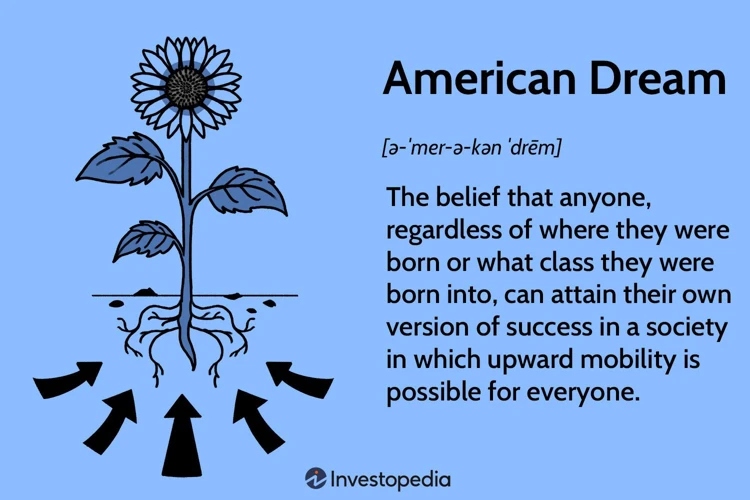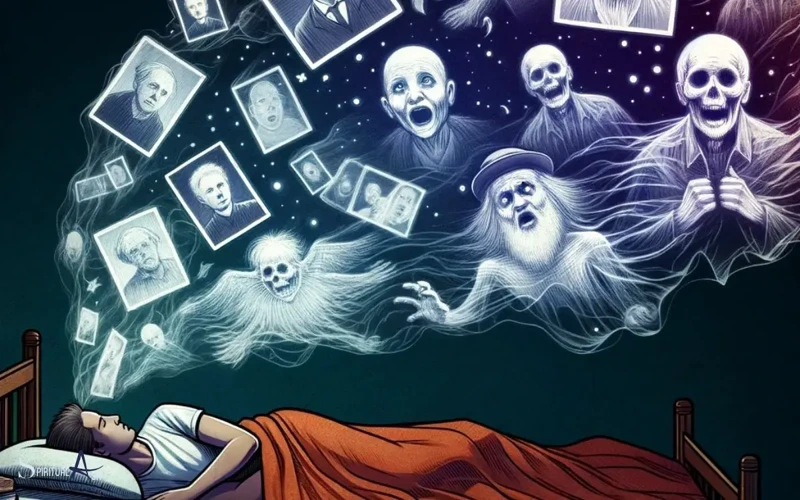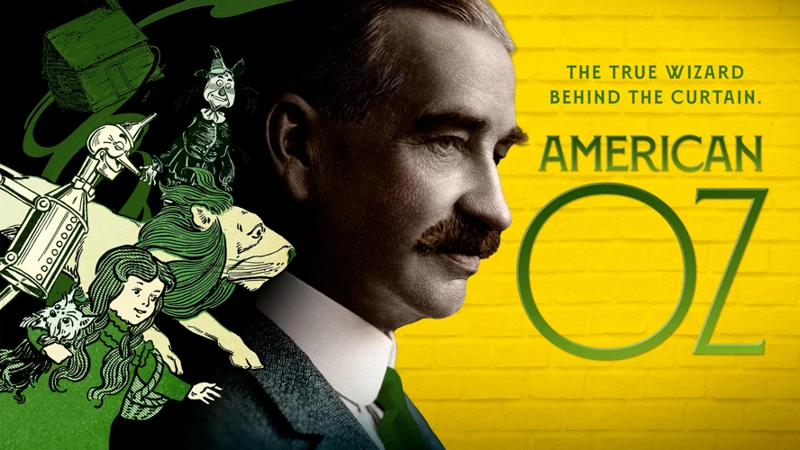For centuries, the concept of the American Dream has captivated individuals around the world, promising the pursuit of success, prosperity, and happiness. This enduring idea has found its way onto the stage, where plays have the power to explore and engage with the complexities of this dream. Through the lens of theater, the American Dream is dissected, challenged, and celebrated. In this article, we will delve into the rich history and definition of the American Dream, examine the role of theater in society, and explore the transformative power of plays that depict the relentless pursuit of success. Join us as we unravel the threads of these captivating stories and uncover the impact they have on audiences, reflecting their personal experiences and inspiring reflection and dialogue. The American Dream takes center stage, and we are left with a greater understanding of its allure, its illusions, and its consequences.
Understanding the American Dream

The American Dream, a concept deeply ingrained in the national psyche, refers to the belief that every individual has the opportunity to achieve success and upward mobility through hard work and determination. It represents the pursuit of happiness, financial security, and social standing – a vision of a better life. However, the definition of the American Dream is constantly evolving, with interpretations varying from person to person. Some see it as attaining material wealth, while others emphasize personal fulfillment and freedom. It is a multifaceted concept, reflecting the diverse aspirations and values of Americans across generations.
To truly understand the American Dream, it is crucial to examine its historical context. The concept emerged during the early days of colonization when European settlers embarked on a quest for religious freedom and economic prosperity. Over time, the Idea of America as the land of opportunity and the destination for a better life took shape and became intertwined with the nation’s identity. The American Dream reached its zenith in the 20th century, fueled by post-World War II economic growth and the rise of the middle class. However, it also faced challenges and criticism, particularly during periods of economic downturn and social unrest. By exploring the historical roots of the American Dream, we gain insight into its evolution and the complexities it embodies.
1.1 Definition of the American Dream
The Definition of the American Dream is multifaceted and can vary depending on individual perspectives. It encompasses the idea that every person has the opportunity to achieve success, prosperity, and upward mobility through hard work and determination. The American Dream can be seen as the pursuit of happiness, economic well-being, and social mobility. For some, it may involve the acquisition of material wealth and possessions, while for others, it may focus on personal fulfillment, freedom, and the realization of one’s aspirations and potential. The American Dream is not a fixed concept but rather a dynamic and evolving idea that reflects the values and dreams of individuals and society. It embodies the belief that anyone, regardless of their background or circumstances, can strive for a better life and achieve their goals. It is a driving force behind the hopes and ambitions of many, shaping their actions and guiding their paths towards success and fulfillment.
1.2 Historical Context
The historical context of the American Dream is essential in understanding its significance and evolution. The concept emerged during a time when European settlers arrived in America with hopes of finding religious freedom and economic opportunities. In the early years of colonization, the idea of a fresh start and a land of limitless possibilities took hold. As the United States began to shape its identity, the American Dream became intertwined with notions of individualism, self-reliance, and the pursuit of happiness. Throughout history, various events and social movements have influenced the American Dream, shaping the dreams and aspirations of different generations. From the post-World War II economic boom to the Civil Rights Movement and the challenges of economic inequality, the historical context provides valuable insights into the multifaceted nature of the American Dream. Understanding how the American Dream has evolved over time can help us critically examine our own dreams and aspirations in the context of our society and the world we dream about.
The Power of Plays

The power of plays lies in their ability to transcend time and space, bringing stories to life and evoking a myriad of emotions in audiences. Theater is a unique art form that combines acting, set design, and storytelling to create a transformative experience. It holds a mirror up to society, reflecting its triumphs, struggles, and dreams. Plays have the power to challenge societal norms, provoke thought, and spark conversation.
The role of theater in society cannot be underestimated. It serves as a platform for social commentary, shedding light on pressing issues and challenging prevailing beliefs. Through the art of storytelling, plays have the capacity to ignite empathy and foster understanding among diverse audiences. They have the power to incite change, to inspire introspection, and to create connections between individuals and their shared humanity.
The evolution of American theater mirrors the changing landscape of the nation itself. From the early works of Eugene O’Neill and Tennessee Williams to the avant-garde experiments of the Off-Broadway movement, theater has continually pushed the boundaries of convention and tradition. It has been a vehicle for marginalized voices, amplifying narratives that explore the human experience in all its complexities. The power of plays lies not only in their ability to entertain but also in their capacity to provoke thought, challenge assumptions, and ignite conversations that resonate long after the curtain falls. Throughout history, theater has served as a portal into the collective consciousness, offering a glimpse into the dreams, hopes, and struggles of a nation in pursuit of its own American Dream.
2.1 Role of Theater in Society
The theater plays a vital role in society, serving as a mirror that reflects the beliefs, values, and struggles of a community. It has the power to entertain, educate, and provoke thought. Through the art of storytelling, theater provides a platform for artists to express their perspectives and confront social issues, including the pursuit of the American Dream. Theater allows audiences to engage emotionally and intellectually, challenging their assumptions and fostering empathy. It sparks conversations and dialogue that can lead to greater understanding and social change. Whether it is through tragedy, comedy, or a combination of both, theater holds up a mirror to society, encouraging individuals to examine their dreams, hopes, and aspirations. It has the potential to inspire and unite communities, prompting them to envision a world where dreams can become reality. How does theater bring the dreams of its characters to life?
2.2 Evolution of American Theater
The American theater tradition has undergone a fascinating evolution throughout its history, adapting to societal and cultural changes. In the early days, theater in America was heavily influenced by European traditions, with plays often imported from England. However, as the nation grew and matured, a distinct American style of theater began to emerge. The advent of realism in the late 19th and early 20th century brought a new authenticity to performances, focusing on the everyday lives of ordinary people. This movement paved the way for playwrights such as Eugene O’Neill, who delved into themes of family, identity, and the human condition. Later, experimental and avant-garde theater challenged traditional storytelling, pushing the boundaries of form and content. Today, American theater continues to evolve, embracing new technologies, diverse voices, and innovative approaches. The evolution of American theater mirrors the changing landscape of society and reflects the dreams and aspirations of its audience. It is a testament to the power of storytelling and the impact it can have on our collective imagination.
Plays Depicting the Pursuit of Success

The pursuit of success is a captivating theme that resonates deeply with audiences, and numerous plays have explored this subject matter with great depth and complexity. These plays offer a window into the human experience, delving into the triumphs, struggles, and sacrifices that individuals make in their quest for the American Dream. Death of a Salesman by Arthur Miller examines the disillusionment and shattered dreams of Willy Loman, a traveling salesman. Lorraine Hansberry’s A Raisin in the Sun unveils the aspirations and challenges faced by the Younger family as they seek a better life. In Glengarry Glen Ross by David Mamet, the cutthroat world of real estate sales serves as a backdrop for exploring the darker side of the pursuit of success. Lastly, Fences by August Wilson portrays the struggles and complexities faced by African Americans in their quest for personal and professional fulfillment. Through these plays, we gain a deeper understanding of the range of experiences and emotions tied to the pursuit of success and the impact it has on individuals and their relationships.
3.1 Death of a Salesman by Arthur Miller
In “Death of a Salesman” by Arthur Miller, the pursuit of the American Dream takes center stage. The play revolves around Willy Loman, a disillusioned salesman who grapples with his fading career and shattered dreams. Willy’s relentless pursuit of success is rooted in the belief that hard work and charm will inevitably lead to prosperity. However, as his illusions crumble, the play explores the illusion of the American Dream and the toll it takes on individuals and their families. Through the portrayal of Willy and his sons, Biff and Happy, Miller challenges the notion that material wealth equates to fulfillment. Ultimately, “Death of a Salesman” serves as a profound critique of a society that values appearances and the relentless pursuit of material success. The play forces audiences to confront the harsh realities of the American Dream and question the price one must pay for its achievement.
3.2 A Raisin in the Sun by Lorraine Hansberry
‘A Raisin in the Sun’ by Lorraine Hansberry is a powerful play that explores the pursuit of the American Dream within the context of racial and economic inequality. Set in 1950s Chicago, the play follows the Younger family as they navigate the challenges of living in a cramped apartment and dream of a better life. Walter Lee, the head of the household, dreams of becoming a successful businessman and providing financial security for his family. Beneatha, his sister, aspires to become a doctor and overcome societal expectations. Through their struggles and aspirations, ‘A Raisin in the Sun’ shines a light on the barriers faced by African Americans in achieving their dreams and the resilience required to pursue them. The play’s title is derived from a Langston Hughes poem, which asks what happens to a dream deferred. Hansberry’s masterpiece not only tells a poignant story but also serves as a reflection of the struggles and hopes of African Americans during a critical period in American history.
3.3 Glengarry Glen Ross by David Mamet
“Glengarry Glen Ross” by David Mamet is a compelling play that delves into the dark underbelly of the American Dream, exposing the ruthlessness and desperation that can accompany the pursuit of success. Set in the high-pressure world of real estate sales, the play follows a group of salesmen, each driven by a combination of ambition and desperation to sell tracts of land. Mamet’s dramatic portrayal of these characters reveals the cutthroat nature of capitalism and the lengths people will go to in order to attain financial success. The play explores themes of deception, competition, and the corrosive effects of a society fueled by greed. It serves as a stark reminder of the price individuals may pay in their quest for the American Dream, challenging our traditional notions of achievement and highlighting the illusion of success that can consume individuals. Through its vivid and unflinching depiction of the human pursuit of success, “Glengarry Glen Ross” forces audiences to confront the darker side of the American Dream and question the moral and ethical implications behind it.
3.4 Fences by August Wilson
One notable play that delves into the pursuit of success within the American Dream is “Fences” by August Wilson. Set in Pittsburgh during the 1950s, the play follows the life of Troy Maxson, a former baseball player turned garbage collector. Through Troy’s character, Wilson explores the barriers and limitations faced by African Americans in their quest for success and upward mobility. The title “Fences” serves as a metaphor for the barriers and limitations that confine and restrict individuals from achieving their dreams. Troy’s aspirations and desire for a better life are constrained by the racial inequalities and systemic barriers of the time. The play showcases the struggles, sacrifices, and conflicts that arise when the pursuit of success intersects with familial obligations and societal expectations. By depicting the complexities of the American Dream through the lens of the African American experience, “Fences” provokes thought and stimulates conversations surrounding the limitations and challenges faced by marginalized communities in their pursuit of the American Dream.
Perspectives and Themes

Plays that depict the pursuit of success offer a diverse range of perspectives and themes. One prevalent theme is the illusion of the American Dream. These plays often delve into the harsh realities and pitfalls of chasing after this elusive dream. They expose the gap between the promise of the American Dream and the stark realities of social and economic inequality. Another significant theme is the effects of capitalism and consumerism. These plays explore the consequences of a society driven by materialism and the impact it has on individuals’ well-being and relationships. Additionally, many plays examine the struggle for identity and cultural heritage, particularly for marginalized communities. They question the notion of assimilation and explore the tensions between maintaining one’s cultural roots and assimilating into mainstream society. These perspectives and themes bring depth and nuance to the exploration of the American Dream onstage, challenging preconceived notions and sparking profound reflection among audiences.
4.1 The Illusion of the American Dream
Plays depicting the pursuit of success often delve into the illusion of the American Dream. They showcase the stark contrast between the idealized vision of success and the harsh realities that individuals face in their pursuit of it. These plays shine a spotlight on the dangers of placing too much emphasis on material wealth and social status as the ultimate markers of achievement. They peel back the layers to reveal the sacrifices, compromises, and shattered dreams that can come with the relentless pursuit of the American Dream. Characters wrestle with disillusionment, questioning whether the dream they have been sold is truly attainable or merely an unattainable fantasy. The illusion of the American Dream is a recurring theme in these plays, serving as a cautionary tale and a reminder of the complexities and pitfalls that lie beneath the surface.
4.2 The Effects of Capitalism and Consumerism
In the realm of American theater, plays depicting the pursuit of success often delve into the effects of capitalism and consumerism on individuals and society. Capitalism, as an economic system driven by profit and private ownership, plays a central role in shaping the American Dream. It promises upward mobility and material wealth, but it also perpetuates inequalities and fosters a culture of competition. Consumerism, closely linked to capitalism, emphasizes the acquisition of material possessions as a measure of success. It fuels desires and creates a never-ending cycle of consumption. Many plays explore how the relentless pursuit of wealth and consumerism can lead to emptiness, disillusionment, and moral decay. These theatrical works invite audiences to reflect on the consequences of prioritizing material gain over authentic happiness and question the extent to which capitalism defines the American Dream.
4.3 The Struggle for Identity and Cultural Heritage
In plays that depict the pursuit of success, the struggle for identity and cultural heritage emerges as a prominent theme. Many characters in these plays grapple with questions of self-identity and the preservation of their cultural roots in the face of societal pressures and the desire for upward mobility. This struggle reflects the complex reality of the American Dream, where individuals must navigate the tension between assimilation and maintaining their unique cultural heritage. For example, in “A Raisin in the Sun” by Lorraine Hansberry, the Younger family, an African American family, confronts the challenges of racial inequality and the erasure of their cultural identity. The play explores the importance of preserving one’s heritage and the sacrifices that must be made in the pursuit of a better life. It raises questions about the extent to which individuals should assimilate into the dominant culture to succeed and the impact this has on their sense of self. The struggle for identity and cultural heritage adds depth and nuance to the portrayal of the American Dream on stage, highlighting the complexities individuals face as they strive for success while holding onto their roots.
Impact on Audiences
Plays depicting the pursuit of success have a profound impact on audiences, provoking thought, reflection, and dialogue. One of the key ways these plays resonate is by reflecting personal experiences. Many viewers can relate to the struggles, aspirations, and setbacks portrayed on stage, seeing themselves or their loved ones in the characters and their pursuit of the American Dream. These stories serve as mirrors, validating and acknowledging their own journeys and challenges. Plays exploring the American Dream have the power to inspire reflection and dialogue, opening up conversations about the complexities of success, the sacrifices made along the way, and the societal structures that shape our aspirations. Audiences are prompted to question their own notions of success, challenging the conventional narratives and exploring alternative paths to fulfillment. Through the power of theater, these plays ignite a spark, encouraging viewers to confront their dreams, aspirations, and the realities that encompass them.
5.1 The Reflection of Personal Experiences
The power of plays depicting the pursuit of the American Dream lies in their ability to reflect the personal experiences of individuals in the audience. These plays often depict characters facing similar challenges and aspirations to those of the audience, allowing them to see themselves in the narrative. Whether it’s the struggles of Willy Loman in “Death of a Salesman” or the tensions within the Younger family in “A Raisin in the Sun,” these stories strike a chord with viewers who have experienced the ups and downs of pursuing their own dreams. Through the reflection of personal experiences on stage, audiences are prompted to examine their own hopes, desires, and the obstacles they have encountered along the way. This introspection creates a connection and empathy between the audience and the characters, reinforcing the power and relatability of these plays. It serves as a reminder that the pursuit of the American Dream is not a solitary journey, but a collective endeavor shared by many. Tell me about your dream – it may well be echoed in a play that brings the universal human pursuit of success to life before your eyes.
5.2 Inspiring Reflection and Dialogue
Plays depicting the pursuit of success have a profound impact on audiences, inspiring reflection and dialogue. Through the stories and characters on stage, viewers are able to reflect on their own experiences and aspirations, and perhaps question the validity of their own dreams in light of the realities portrayed. These plays serve as a mirror, allowing individuals to examine their ambitions, motivations, and the sometimes harsh realities they face in their pursuit of the American Dream. The dialogue sparked by these plays extends beyond the theater walls, as audience members engage in discussions with friends, family, and colleagues, sharing their perspectives and insights. By questioning and exploring the themes and ideas presented in these plays, individuals can gain a deeper understanding of the complexities of the American Dream and its impact on society. Through this reflection and dialogue, we can collectively seek new ways to redefine and reshape our dreams, striving for a more inclusive and equitable future.
Conclusion
In conclusion, the power of plays depicting the pursuit of success allows us to delve deep into the complexities of the American Dream. Through compelling narratives and vivid characters, these plays expose the illusions, effects, and struggles associated with the pursuit of success and the American Dream. From Arthur Miller’s “Death of a Salesman” to Lorraine Hansberry’s “A Raisin in the Sun,” these plays provoke thought and introspection, prompting audiences to reflect on their own experiences and contemplate the true meaning of success. Theater serves as a platform for dialogue and discussion, fostering a better understanding of the challenges individuals face in their quest for the American Dream. Ultimately, these plays remind us that the American Dream is a nuanced and ever-evolving concept, shaped by personal values, societal pressures, and external circumstances. As the curtains close, we are left pondering the dreams we chase and the world we dream about, as we seek to find our own paths towards success and fulfillment.
Frequently Asked Questions
1. What is the role of the American Dream in contemporary society?
The American Dream continues to play a significant role in contemporary society as it serves as a driving force for individuals to strive for success and a better life. It influences people’s aspirations, career choices, and pursuit of personal and financial goals.
2. Has the definition of the American Dream changed over time?
Yes, the definition of the American Dream has evolved over time. Initially centered around opportunities for religious freedom and economic prosperity, it has become more nuanced, encompassing notions of personal fulfillment, equality, and social mobility.
3. Are there any examples of people who have achieved the American Dream?
Yes, there are numerous examples of individuals who have attained the American Dream in their own unique way. From self-made entrepreneurs to successful artists or professionals, these individuals have overcome challenges and obstacles to fulfill their dreams and achieve success.
4. Does everyone have an equal chance of achieving the American Dream?
The American Dream holds that everyone has an equal opportunity to achieve success, but in reality, various factors such as socioeconomic background, systemic inequalities, and access to resources can impact one’s chances. The degree of equality in pursuing the dream is a matter of ongoing debate.
5. How do plays explore the complexities of the American Dream?
Plays provide a platform for playwrights to delve into the complexities of the American Dream, examining its promises, illusions, and consequences. By portraying characters and their stories, plays offer insights into the struggles, sacrifices, and triumphs associated with the pursuit of success.
6. What is the relationship between the American Dream and capitalism?
The American Dream and capitalism are closely intertwined. Capitalism, with its emphasis on free markets, individualism, and economic opportunities, has been seen as a facilitator and enabler of the American Dream. However, critics argue that unchecked capitalism can also perpetuate inequalities and hinder upward mobility.
7. How does the American Dream influence popular culture?
The American Dream has a significant influence on popular culture, shaping the narratives and values portrayed in music, film, literature, and other forms of art. It often serves as a source of inspiration and provides a backdrop for stories that explore themes of ambition, success, and overcoming adversity.
8. Can the American Dream be achieved without hard work?
Hard work is typically considered essential in the pursuit of the American Dream. While there may be exceptions, achieving long-lasting success and fulfillment generally requires dedication, perseverance, and a strong work ethic.
9. Are there any drawbacks or criticisms associated with the American Dream?
Yes, there are various criticisms and drawbacks associated with the American Dream. Some argue that it perpetuates a hypercompetitive society, promotes materialism, and neglects social and environmental costs. Others highlight the unequal distribution of resources and opportunities, which can hinder equal access to the dream.
10. How does the American Dream differ from person to person?
The American Dream is subjective and can differ from person to person. It is influenced by individual values, cultural background, and personal goals. For some, it may be focused on financial success, while for others, it may prioritize personal fulfillment, happiness, or making a difference in the world.







